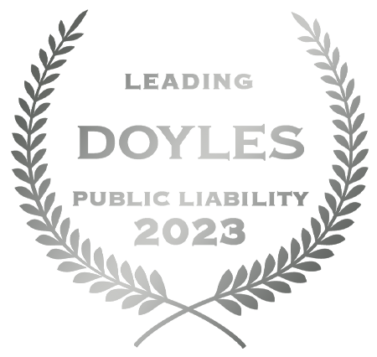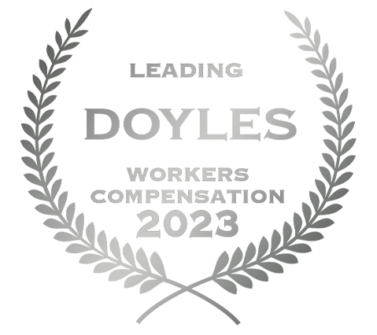
Pain and Suffering Calculator.
If you’re claiming compensation for an injury, it’s likely you’ll receive payments for your losses like time off work, medical, and care expenses. But what about the distress, pain, difficulty, and overall impact on your well-being that your injury has caused? This is where a pain and suffering claim comes in, also referred to as a ‘general damages’ claim, or ‘non-economic loss.’
Pain and suffering claims can be a substantial amount on top of any other payments that you’re awarded, so if you’re claiming compensation, it’s important to find out if you can claim this additional lump sum. In this guide, we unpack everything you need to know about how pain and suffering claims are calculated, what you may be entitled to, and how to get help with your claim. We’ve also included a simple pain and suffering compensation calculator you can use to look up lump sum payout ranges.

What is a pain and suffering payout?
A pain and suffering payout is to compensate you for personal losses on top of any other claim you might already be making. Pain and suffering compensation payouts are calculated based on how much your injuries have affected you, the impact on your lifestyle and work, as well as potential future expenses you may face.
In NSW, you might be able to claim pain and suffering compensation if you’ve been injured:
- In a car accident
- In an accident in a public place
- Through medical negligence
- At work (if you’re an emergency service worker)
How is pain and suffering calculated?
Pain and suffering payouts are based on how much you’ve been impacted compared to the ‘most extreme case’ (MEC). MEC is considered the worst possible scenario and can be difficult to define. It considers how an injury would have the biggest impact on someone’s life overall, and factors in considerations like age, type of injury, and how your life will be affected by your injuries.
The calculation of pain and suffering payouts is subjective, so it’s critical to have a lawyer on your side who will get to know your circumstances and make the strongest possible case on your behalf.
At Law Partners, we’ll take time to get to know you personally. This means that we can represent the full physical, social, and emotional impact of your injury when we make your claim. We win over 99% of our cases and pride ourselves on winning the maximum lump sum payout for our clients.
Pain and suffering compensation calculator Australia/NSW – updated December 2023.
The following table can be used as a pain and suffering compensation calculator for NSW medical negligence and public liability claims and shows the lump sum amount that you may be entitled to, based on your assigned percentage of the MEC.
| Percentage of Most Extreme Case (MEC) | Entitlement* |
| 1-14% | No damages to be awarded |
| 15 – 20% | $7,000 – $25,500 |
| 21 – 25% | $29,000 – $47,000 |
| 26 – 30% | $58,000 – $166,000 |
| 31 – 40% | $187,500 – $289,000 |
| 41 – 50% | $296,00 – $361,000 |
| 51 – 60% | $368,000 – $433,000 |
| 61 – 70% | $440,500 – $505,500 |
| 71 – 80% | $512,500 – $ 577,500 |
| 81 – 90% | $585,000 – $650,000 |
| 91 – 100% | $657,000 – $722,000 |
To make a pain and suffering claim you must reach at least 15% of the MEC, so if you have a significant injury then you’re likely to be eligible. The total amount payable for a pain and suffering claim is indexed each year and the current maximum is $722,000*. Between 15% and 32% of the MEC, you’ll receive a smaller percentage of the maximum amount payable. Most pain and suffering cases are settled within this range, but each percentage point of impairment can make a substantial difference to the final amount you receive.
This is why it’s so important to have a lawyer who understands you and your case at the most personal level to present the strongest argument about the impact of your injuries. The difference between an assessment of 30% and 32% is $50,500.
If you’re above 32% of the MEC then your payment will be a proportional percentage of the maximum amount. Each payment must be rounded to the nearest $500.
*As of December 2023, http://www.furzercrestani.com.au/resources/forensic_accounting_handbooks
Call 13 15 15 or chat to us now for free advice
Chat nowFind out how much you can claim.
Get startedWhat are some pain and suffering settlement examples?
Calculating pain and suffering compensation payments is complex. We’ve provided some examples of the type of injuries that qualify for different payments, but if you’d like some personal advice about your specific situation then you can get in touch with us today and speak to a lawyer who specialises in claims like yours.
Pain and suffering settlement example 1: 28% of MEC
70-year-old Carol was shopping at a hardware store when she tripped on a steeply raised curb at the store’s entrance and injured her ankle. She suffered a fracture and a dislocation which has caused her ongoing pain, poor mobility, and a restricted range of motion. She needed two surgeries, plate implants, and screws to stabilise her ankle. After the injury, she spent a week in hospital and was discharged in a wheelchair for a further six weeks because she was completely unable to bear weight. She now walks with a cane.
Carol looks after three of her grandchildren who have stepped up to help her around the house, though she wishes they didn’t have to. She can’t clean or garden the way she used to, nor walk on the beach or any sort of uneven ground. She feels depressed, angry, and frustrated, and has gained 10kgs because of the change in lifestyle.
As she wasn’t working at the time of the accident there was no claim for economic loss, her claim was only for general damages. When the case was settled in 2019, the judge granted Carol 28% MEC, which amounted to $92,000 under the existing maximum of $658,000.
Pain and suffering settlement example 2: 40% of MEC
Oliver was only five years old when he was playing in the backyard with a school friend and heard the dogs next door barking loudly over the fence. He climbed up onto the fence using a tree stump for balance so he could peek over the top and try to calm the dogs down. He had one hand on the top of the fence and was pulling himself into a standing position when one of the dogs leapt up and bit his hand which pulled him forwards, and then the second dog jumped up and bit Oliver’s face.
Shocked, terrified, and in pain, Oliver was rushed to hospital in an ambulance where he received stitches and had his wounds bandaged. He’ll have scars on his arm and face for life. This will mean he can’t spend long periods in the sun, which may impact his future work prospects. As a result of the scars, Oliver had to move schools because he was being bullied so badly, compounding his psychological injuries. He also has a significant fear of dogs.
Though the potential future costs of medical treatment were unknown, the judge saw the considerable impact Oliver’s injuries had already had on his life. Oliver was assessed as being 40% of MEC, and was awarded $282,000 compensation for pain and suffering, on top of his other claims.
Pain and suffering settlement example 3: 70% of MEC
Jai is a young man who was doing casual work as he travelled around Australia. He and some friends found some construction work through the hostel they were staying at, despite not having a white card or any other relevant experience. He and his mate were asked to move heavy timber beams from a shipping container at the top of a dangerous construction site to a different part of the site, taking the beams from pallets. It was a two-person job.
The beams on the pallet were heavy – around 20kg each and almost 4 metres long, stacked high, and unsecured. After several days of completing the same repetitive motion without issue, Jai lifted the back of a beam from the top of a stack, and as his colleague started to move forward, the entire stack collapsed sideways, pinning Jai to the wall of the shipping container, and raining down on his head and body. He was wracked by immediate pain shooting up his back and realised that he couldn’t feel his legs.
As a result of his injuries, Jai, age 24, is an incomplete paraplegic and suffers from extreme pain, partial loss of function in his legs, and fractures in his spine. His condition has stabilised, but he still suffers lower back pain, weakness in his legs, and is prone to falls. He’s unable to participate in any of the sports he previously enjoyed like skiing, golf, and soccer. There’s also a significant risk of his injuries causing further problems down the track. The construction company said he should be assessed at 40%, but because his lawyer had taken the time to get to know Jai personally, they were able to present the best case on Jai’s behalf. The judge observed that Jai was an overwhelmingly positive and impressive young man whose life had been unfairly altered by the accident and she awarded him 70% of the MEC. This amounted to $493,500 compensation for pain and suffering. The overall payment that Jai received was almost two million dollars.
How do I make a pain and suffering claim?
Pain and suffering claims are generally made alongside other claims, and the requirements will change based on which claim you’re making. For example, with a CTP (Compulsory Third Party) claim, to be eligible for pain and suffering you must not be the at-fault driver, your injuries must be assessed as being above threshold, and you’ll need to have at least 11% permanent impairment. For more information on this, see our article on car accident compensation for pain and suffering.
How can I get help claiming a pain and suffering payout?
With the substantial benefit a pain and suffering payout can bring, having the right specialist lawyer on your side is the best way to access everything you may be entitled to. At Law Partners, we win over 99% of our cases, and our commitment to getting to know our clients personally helps us achieve the best outcomes with every case we take on. We also operate on a no win, no fee basis, so we can get a claim started for you whenever you’re ready.
We’ve provided this guide to give you an overview of how pain and suffering is calculated, but for more personal advice about your situation, you can contact us for a free, confidential discussion, without committing to anything.

Shane Butcher
Principal
An accredited specialist in personal injury law and spokesman for the Australian Lawyers Alliance, with the best part of 20 years’ experience in assisting injured Australians to receive everything they’re entitled to.
Do I have a case?
Our senior lawyers will assess your case for free.











